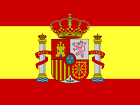Decoding Key Shipping Terms: IPI, RIPI, and MLB for China-US Freight
In the dynamic world of international shipping, especially when navigating the complexities of China-to-USA logistics, you'll frequently encounter terms like IPI, RIPI, and MLB. These acronyms represent distinct intermodal shipping strategies, each with its own route, timeline, and cost structure. Understanding these terms is crucial for optimizing your supply chain and ensuring timely, cost-effective delivery of your goods. Let's break down each concept:
What is IPI? - Interior Point Intermodal
IPI, or Interior Point Intermodal, refers to a shipping method where cargo arriving at a West Coast port in the United States is then transported inland to an interior destination. Think of it as your goods entering the US through ports like Los Angeles or Long Beach and then journeying across the country to cities like Chicago, Dallas, or Atlanta.
-
Route: Origin (e.g., China) to a US West Coast Port (e.g., Long Beach, Los Angeles) → Inland USA Destination
-
Transportation Modes: Primarily ocean freight for the initial leg, followed by a combination of trucking for shorter distances and rail transport for longer hauls across the continent.
-
Key Feature: IPI is ideal for shipments destined for locations deep within the continental USA, leveraging the extensive US railway network to efficiently reach interior points after arriving on the West Coast.
What is RIPI? - Reverse Interior Point Intermodal
RIPI, or Reverse Interior Point Intermodal, inverts the IPI concept. In a RIPI scenario, freight from origins like China traverses the Panama Canal to reach a US East Coast port. From there, it's transported westward to its final destination.
-
Route: Origin (e.g., China) → Panama Canal → US East Coast Port (e.g., New York, Savannah) → Westward Inland USA Destination.
-
Transportation Modes: Ocean freight via the Panama Canal is the initial mode, followed by trucking and rail for the inland westward journey.
-
Key Feature: RIPI is designed for shipments aimed at interior US destinations that are more efficiently accessed from the East Coast. By utilizing the Panama Canal, it offers an alternative route to reach these areas.
What is MLB? - Mini Land Bridge
MLB, or Mini Land Bridge, describes an intermodal service that uses a combination of ocean and land transport to move cargo to another port location. Imagine a shipment from Shanghai intended for New York. Instead of the all-water route via the Panama Canal, an MLB approach could route the shipment to Long Beach (West Coast port) via ocean, then utilize rail or truck across land to reach an East Coast port like New York.
-
Route: Origin (e.g., Shanghai) → US West Coast Port (e.g., Long Beach) → Land Transport (Truck or Rail) → Another US Port (e.g., New York).
-
Transportation Modes: Ocean freight initially, followed by trucking or rail for the land bridge portion, and potentially further ocean or land transport from the second port.
-
Key Feature: MLB is primarily about reaching another port, not necessarily an inland consignee. It's often used when an all-water route (like Panama Canal to the East Coast) is too time-consuming. The freight might then be loaded onto another vessel at the second port or further transported inland.
Key Differences and Practical Applications
The fundamental difference lies in the delivery point. IPI and RIPI are designed to deliver shipments to the consignee's door (or a designated inland terminal for final delivery). MLB, however, delivers to another port or terminal location, often for onward shipping.
When to Choose Which Option?
-
IPI: Ideal for shipments destined for inland cities in the USA, particularly those geographically closer to the West Coast, offering a balanced approach of cost and transit time.
-
RIPI: A good choice for inland destinations better served via the East Coast, offering an alternative route utilizing the Panama Canal. It's generally an all-water route to the East Coast followed by inland transport.
-
MLB: Consider MLB when time is of the essence and the all-water route via the Panama Canal is too slow. MLB can significantly reduce transit time, often by approximately 10 days compared to the all-water Panama Canal route. However, this speed comes with a higher cost. If you're shipping from China to the US East Coast and facing a tight deadline, MLB can be a valuable, albeit more expensive, solution.
In Conclusion
Navigating international shipping can be complex, with a multitude of options and considerations. Understanding IPI, RIPI, and MLB is essential for making informed decisions about your China-US freight. By grasping the nuances of these intermodal services – their routes, transit times, and cost implications – you can optimize your logistics strategy and ensure your shipments arrive on time and within budget.
Ready to Optimize Your China-US Shipping with UCS Logistics?
Are you shipping from China to the USA? Let us help you find the most efficient and cost-effective solution. Fill out the form below to receive a tailored shipping solution and a competitive freight quote!

 English
English Spanish
Spanish Arabic
Arabic